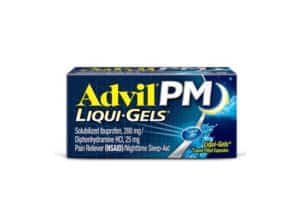Memory foam mattresses have become incredibly popular in recent years. We answer why some of these mattresses contain fiberglass.
Many people are unaware that the mattress they sleep on contains an ingredient as potentially hazardous as fiberglass.
Not all memory foam mattress contain fiberglass! Mattresses without fiberglass are easy to find. The majority of foam mattresses with this substance come from cheap brands. Make sure to look for certifications
The reason memory foam has fiberglass is to cut costs as it still helps add elasticity and flexibility, but its cheaper than foam and more readily available in china.
This article will explore the reasons behind why memory foam mattresses contain fiberglass and investigate whether or not it poses a health risk.
What Is Memory Foam?

The first thing to understand is what memory foam is. Memory foam is a type of polyurethane foam that contours to the shape of your body when you lay down, providing added comfort and support.
Benefits Of Memory Foam Mattresses
Memory foam mattresses have become increasingly popular due to their many benefits. They provide superior comfort and support, making them ideal for those who suffer from back or joint pain.
As well as this, they are extremely durable and can last up to 10 years with proper care. Here are the advantages of memory foam mattresses:
- Contours to your body shape – Memory foam molds around you as you sleep which can help relieve pressure points.
- Provides support – Memory foam helps keep your spine aligned while you sleep, promoting better posture.
- Reduces motion transfer – If your partner moves during the night, memory foam absorbs the movement so that it doesn’t disturb your sleep.
- Hypoallergenic – It is less likely to contain dust mites or other allergens compared to traditional mattresses.
- Easy to clean – Memory foam is resistant to spills and stains, and requires minimal maintenance so it’s hassle-free.
Overall, memory foam mattresses offer numerous benefits that can improve your quality of sleep. With all these advantages, it’s no wonder they’ve become so popular in recent years!
What Is Fiberglass?

Fiberglass is an age-old material that has been used for decades in many applications. It is a lightweight, strong material made from spun glass and resin.
In the past, it was primarily used as insulation for buildings and ships, but now it finds its way into many other products – including memory foam mattresses.
The key benefit of fiberglass in mattresses lies in its durability. The strong and sturdy fibers can withstand regular wear and tear over time, helping to keep the mattress looking good and performing well for longer than other materials would allow.
Additionally, fiberglass is also resistant to fire, making it safer than other materials when sleeping on it.
Potential Health Risks From Fiberglass
The use of fiberglass in memory foam mattresses has been questioned by consumers, wondering if there are any potential health risks involved. While some suggest that the material may be hazardous to our health, is this really true?
Let’s take a closer look.
The main issue with fiberglass in mattresses is its potential for respirable particles, which can be dangerous to inhale. These particles can cause irritation to the eyes and respiratory system, and if someone is exposed to large amounts over an extended period of time, they could develop more serious conditions such as lung cancer.
However, many mattress manufacturers use tightly-woven fabrics designed to prevent these particles from escaping or being inhaled.
Additionally, some studies have shown that exposure to very low levels of fiberglass is generally safe and doesn’t carry any long-term health risks.
But what if you still don’t feel comfortable with the idea of sleeping on a mattress made with fiberglass?
Fortunately, there are several alternatives available that provide similar comfort and durability without using this material.
The Environmental Effects Of Memory Foam And Fiberglass
The environmental effects of memory foam and fiberglass are often a point of contention. Many people believe that the combination of these two materials can be hazardous to their health, but is this theory true?
Memory foam is made from polyurethane, which is considered a safe material for the environment. Fiberglass, on the other hand, is made from glass fibers and poses a potential risk to your health when inhaled.
When discussing the environmental effects of memory foam and fiberglass, there are several points to consider:
Health risks:
- Short-term effects – Exposure to fiberglass may cause respiratory irritation, skin irritation, and eye irritation in some people.
- Long-term effects – Chronic exposure to fiberglass may lead to an increased risk of cancer.
Environmental impacts:
- Manufacturing process – The production process for memory foam mattresses uses large amounts of energy and water. It also releases volatile organic compounds (VOCs) into the atmosphere. These VOCs contribute to air pollution and global warming.
- Recycling – Memory foam mattresses are not recyclable because they contain both plastic and metal components. However, some companies offer recycling programs for old mattresses.
It’s important to remember that while there may be health risks associated with certain materials used in memory foam mattresses, overall the impact on the environment is minimal.
As long as you take precautions when handling fiberglass or any other potentially hazardous material, you should be able to use your mattress without fear of harm.






